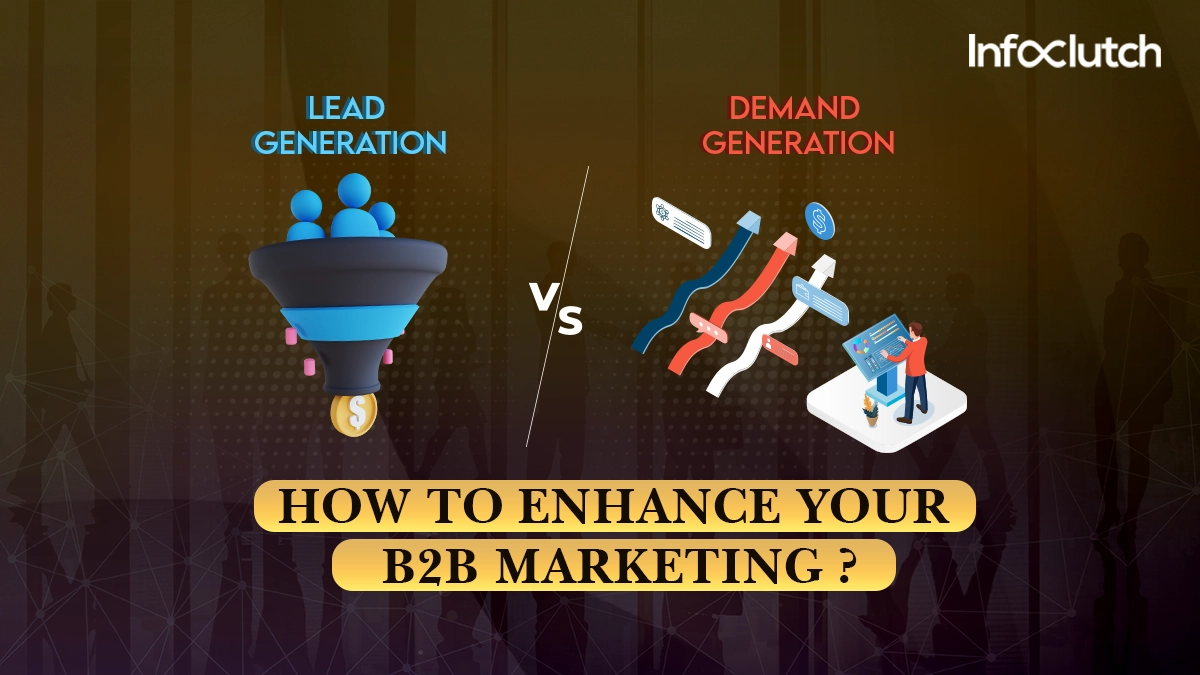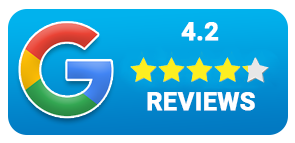The recent years have witnessed a growing confusion between the phrases lead generation vs. demand generation. Indeed, B2B marketers have begun to use both terms interchangeably, stating that there is no need to distinguish between the two. But where does this confusion put down its roots?
Well, both these marketing concepts are quite different from each other, and must work in perfect harmony for your marketing efforts to yield results.
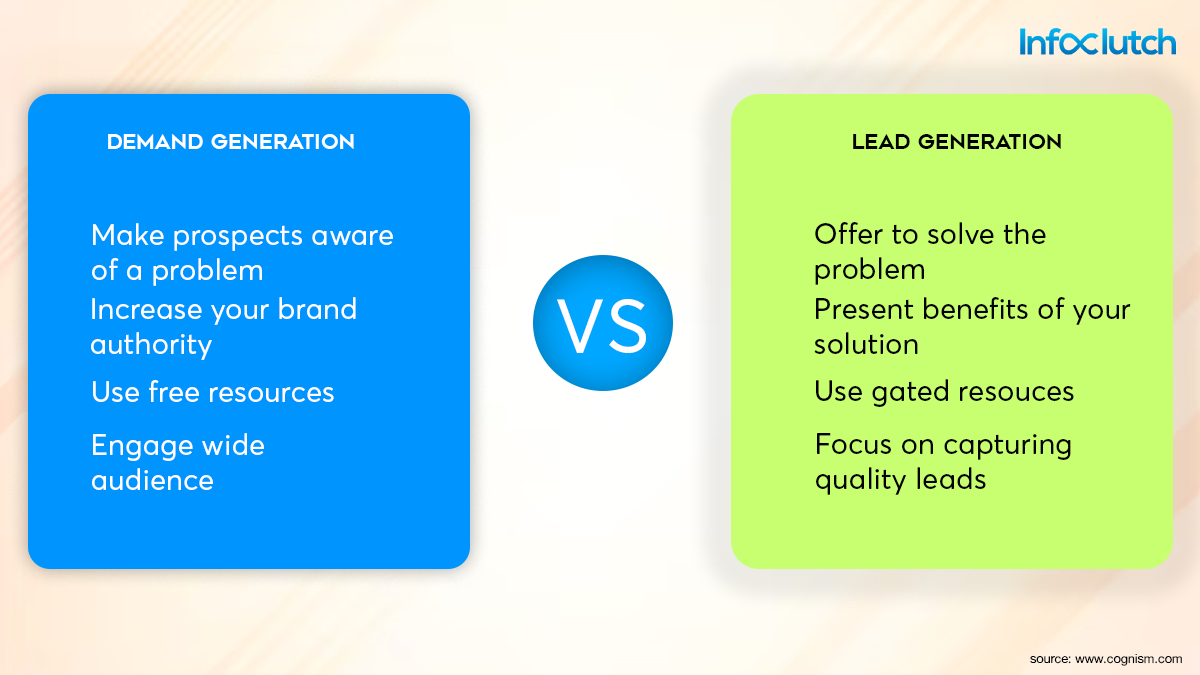
So, in this blog , we delve deep into the key differences between the two, and how they can be used in sync to build an absolute powerhouse of a marketing campaign. Read on to know more!
What are the various key differentiating factors between demand and lead generation?
So, what is demand generation vs. lead generation? Well, here are three comparison parameters to give you the right idea!
| Comparison Parameter | Demand generation | Lead generation |
|
1.Objective |
Demand generation strives to raise awareness of your organization and the challenges it answers. It’s crucial for new prospects to know who to turn to when the situation occurs. | The goal of lead generation is to convert the demand generated in the previous step into leads. It’s natural for your target audience to learn about your goods as their purchase journey progresses. Then you might offer to address prospects’ problems with your product. |
|
2.Engagement |
Demand generation elevates audience trust and brand authority. The more you establish yourself as an industry thought leader, the more people are willing to do business with your company. | Lead generation assists in distinguishing your business’s products and offerings from those of your rivals. It outlines all of the advantages associated with employing your product. |
|
3.Impact |
It is necessary to educate your target audience in order to generate demand. It usually entails producing complimentary materials to answer your prospects’ inquiries. | Lead generation takes it to the next level, with more detailed content about cultivating leads and establishing your business. It employs gated resources that necessitate contact information. |
Let us now take an extensive look into both these concepts, delving deeper into their functionality and use cases in your respective marketing campaign. Read on!
What is the primary difference between demand generation and lead generation?
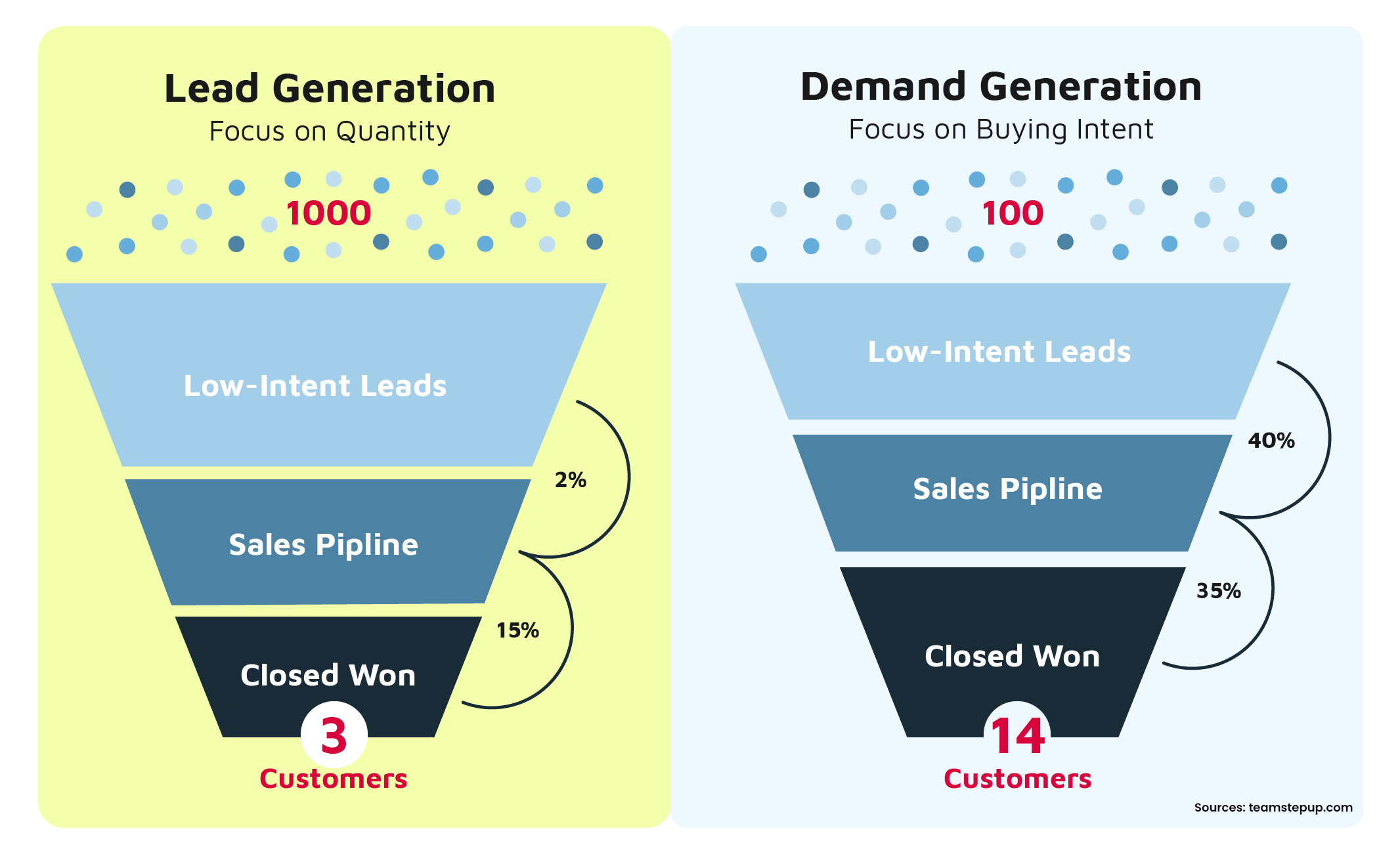
Although the two terms sound quite similar, they project stark differences. So, what is the difference between demand generation and lead generation?
What is demand generation?
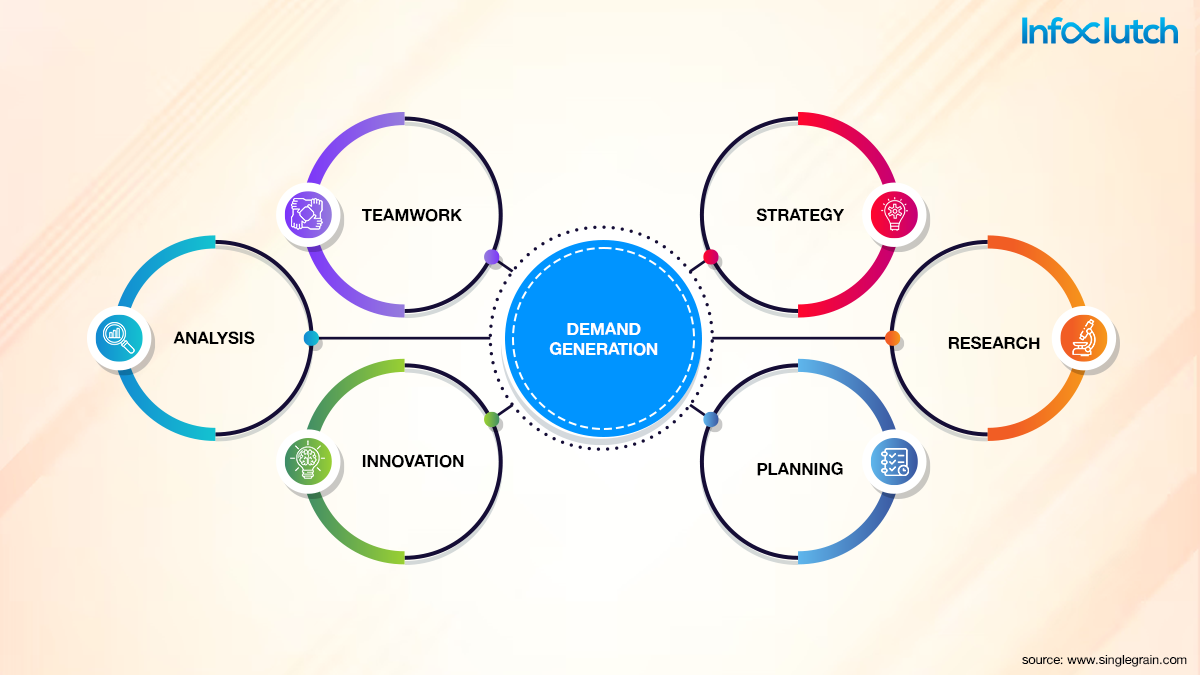
Essentially, demand creation is the process of generating interest in what you have to offer. On the other hand, lead generation is the work of converting the interest garnered by demand generation into contact details (leads) that you or your sales staff can follow up with.
Demand generation moves prospects from being aware that they have a problem that you can address, to developing a sense of confidence in your brand, to a firm desire to learn what your solutions can accomplish for them.
To give you a better idea, here are some of the top metrics leveraged by demand generation campaigns:
- Organic traffic
- Cost Per Mile (CPM)
- Market share percentage, and so on.
Let’s consider an example to understand how demand generation really works.
Demand generation aids in formulating ideal prospect persona and mapping it on the customer journey .To maximize conversions, you must connect with the appropriate target audience. The initial stage is to develop buyer personas. Personas assist you in segmenting various types of clients and understanding their distinct set of pain points.
Create journey maps for clients to observe the way every persona group interacts with the buyer’s journey.
For instance, let’s talk about Adobe. Adobe has perfected the utilization of social media promotion to build demand for its products, which is one of the reasons.
Adobe utilizes social media sites such as Twitter, LinkedIn, and Instagram to share captivating, informative, and amusing material, generally demonstrating their offerings and practical applications of current clients using Adobe’s applications.. They also run targeted ads on social media sites to bring prospective customers to their website.
With tailored content, social media marketing is an excellent approach to reach a huge number of potential customers. You may increase brand visibility, trust, and credibility with new clients by posting intriguing and engaging content, which can lead to increased sales.
What is lead generation?

On the contrary, Lead generation converts this garnered interest into something concrete and actionable. The most evident distinction between the two is whether or not the campaign requests contact information.
You operate a lead generation campaign if you fence your written material within an application asking for contact information and then pay to disseminate it to a specific audience. On that note, here are some metrics leveraged by lead generation campaigns in order to track campaign progress:
- Number of email subscribers
- Conversion rate
- ROI per marketing campaign
- Number of leads acquired
- Length of sales funnel
- Customer acquisition cost (from individual campaigns), and so on.
Let’s take a look at lead generation by looking at how gated content can be used for the same.
Gated content is material that internet users (or potential clients) can only view or download after visiting your website and providing you with certain personal data. This contact data is then often given off to the sales representatives in order for a connection to be made.
Gated content is an excellent approach to collect vital information about visitors to your web assets. This information is typically provided in a format consisting of titles, email addresses, firm names, phone numbers, and so on. This is often also referred to as a “lead magnet.”
The goal here isn’t to encourage as many people to engage with your content as possible; it’s to capture a myriad of relevant leads by offering individuals a reason to exchange contact information and ensuring that it’s easy for them to do so.
How do Lead generation and demand generation function together?
As you already know by now, demand and lead generation are two starkly different marketing procedures. These methods do at times use the same tactics and tools; however, they use these tools in completely different situations for varied end-results.
So, how can lead and demand generation work in unison? Well, the two ideas should be combined to form a symbiotic system that converts consumers into potential prospects as well as intrigued prospects into customers.
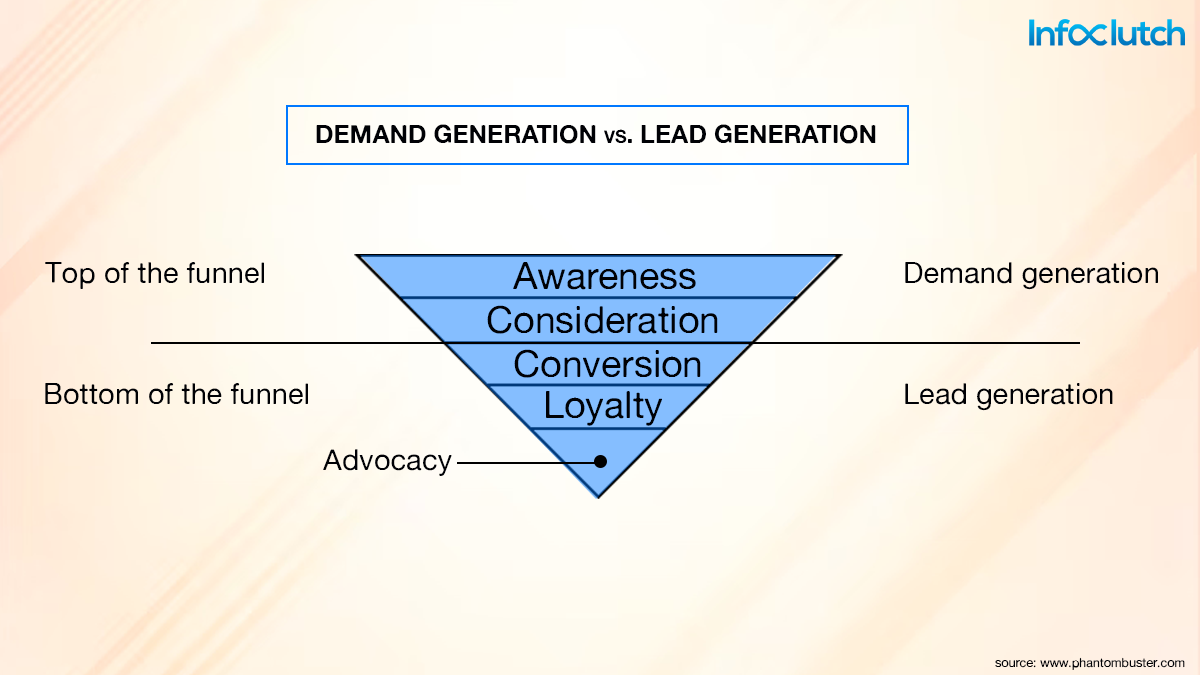
For instance, let’s say you want to give away some useful and insightful content away for free (e.g., a whitepaper).
This demand generation tactic works effectively to generate curiosity about a brand, and it should be combined with a lead generation plan to maximize marketing efforts. In this case, it may be beneficial to distribute the whitepaper by email link, acquiring the email address belonging to a prospective client in the process.
Overall, developing successful solutions follows a more cut and try approach. Constant innovation and expansion are essential for a company’s demand and lead generation tactics to flourish.
Wrapping Up
So that brings us to the end of our answer for “lead generation vs. demand generation “. Demand and lead generation are critical components of every revenue-driven marketing plan. Lead generation converts their curiosity in the company into a need for what you offer, whereas demand generation promotes brand awareness.
Demand generation and lead creation tactics both contribute to the development of a long-term pipeline of quality leads. So, make sure you use both these marketing strategies to extract the best ROI your organization can!

